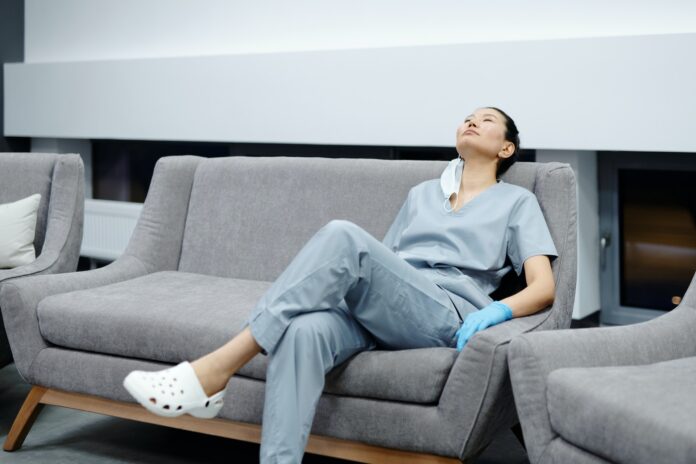An estimated 1.8 million Canadians work night shifts, and for nurses, these shifts often last 12 hours or more. Adjusting to night work is exhausting, and the fatigue that comes with these schedules can leave employees prone to making mistakes — yet a new study from McGill University has found a technique that may help night workers stay alert on the job.
Mariève Cyr, a fourth-year medical student at McGill, was first author of the study published in Sleep Health.
Night shifts can lead to fatigue and mistakes on the job
It’s common for nurses to work long overnight shifts, and staff shortages caused by the COVID-19 pandemic have only increased this workload. Shift work is associated with long-lasting negative health outcomes, and can lead to fatigue and burnout, as well as errors on the job. The team behind the study wanted to help these vital healthcare employees — as well as their patients — by identifying techniques that could reduce their fatigue levels.
Along with study senior author Jay Olson, currently a postdoctoral fellow in the Department of Psychology at the University of Toronto Mississauga, Cyr investigated an intervention designed to ward off shift work fatigue. This involved exposing nurses to bright lights for 40 minutes before their shifts, and having them wear dark sunglasses when they were awake at home after their shifts. They were also asked to wear eye masks when they were sleeping.
A second control group of nurses was asked to adjust their diets by eating a complete meal before their night shift and healthy snacks at work as needed. This intervention was not meant to influence the nurses’ sleep patterns, but was instead used so that study participants wouldn’t know if they were in the control group or not.
Shining a bright light on shift work interventions
The researchers found that nurses in the evening light intervention group reported lower levels of fatigue than the nurses who adjusted their diets. While 41% of nurses who adjusted their diets did report less fatigue than before the study, this number jumped to 73% for nurses who were exposed to bright lights before their shifts.
Nurses following the bright light intervention also reported 67% less errors at work compared to a 10-day observation period before the study. On the other hand, nurses who adjusted their diets reported only a 5% reduction in errors. These results show that the bright light intervention impacted the nurses’ fatigue levels as well as their performance at work, resulting in better healthcare for their patients.
“Our study shows that feasible changes, such as getting light exposure before the night shift, may help reduce fatigue and its effects on performance at work, something which could benefit both the nurses and their patients,” Olson said in a press release.
These results aren’t just promising for nurses, but may also help shift workers in other fields. From police officers to security guards to telescope operators, shift work is common throughout Canada and the rest of the world. Similar interventions could likely help these employees manage their fatigue.
“[B]etween a quarter and a third of the world’s employees do some form of shift work,” Cyr said.
“Although we focused on nurses working rotating schedules, our results may apply to other types of shift workers as well.”
Following their study, the researchers launched a website to help shift workers find strategies that will work best for them. This research will help shift workers get a good day’s sleep and be well-rested for the night ahead.








































